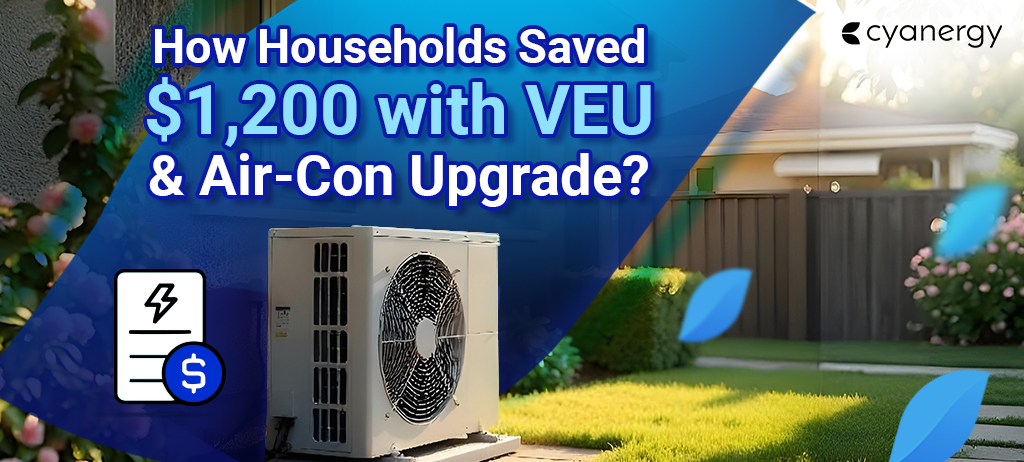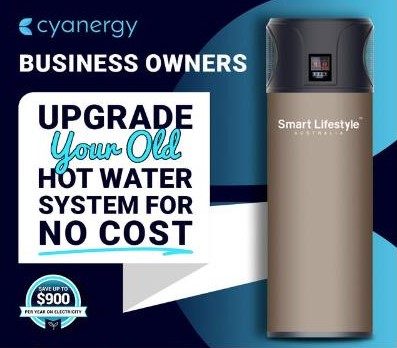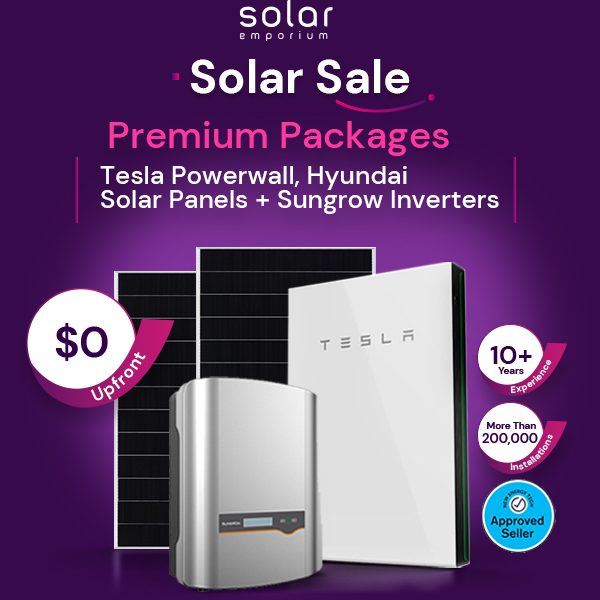Over the decades, many households across Victoria have resided in older suburban homes equipped with traditional ducted gas heating and aging split-system air conditioners.
However, today the scenario has changed significantly. As energy prices rise, families are feeling the pinch, with annual heating and cooling costs often rising $2,000.
But what are the main issues?
Gas systems that waste energy heating unused rooms, old non-inverter aircons that struggle to maintain even temperatures, and confusion among residents about how rebates, such as the Victorian Energy Upgrades (VEU) program, actually work.
That’s where trusted providers like Cyanergy Australia step in!
By replacing outdated systems with efficient reverse-cycle multi-split air-conditioning and applying VEU rebates, we help many households to cut energy bills, reduce emissions, and enjoy year-round comfort, all in one smart upgrade.
This air conditioning upgrade can lead to a smoother transition from gas to clean, efficient electric heating and cooling, building a smarter, more sustainable home.
So, let’s break down how the household saved $1,200 with the VEU & Air-Con upgrade, what the program offers, and how you can take advantage of similar rebates to cut costs and enjoy a more energy-efficient home.
Cyanergy’s Energy Assessment: What We Found!
From the beginning, Cyanergy’s focus was to remove or disconnect the old gas ducted heater, install a modern reverse-cycle multi-split air conditioning system, claim the VEU discount, and significantly reduce your annual energy bills.
Simply via the effective air-conditioner upgrade, households can “Save up to $2,000 a year on your energy bill.
Here are the findings after Cyanergy’s initial home energy visit:
- In many Victorian households, the ducted
gas heater is still in use, with high standing and fuel costs.
- The older split system had poor efficiency. Some of them were oversized for the room and lacked zoning
options.
-
The electrical switchboard had spare capacity to support a multi-split installation. For example, one
outdoor unit
with multiple indoor units for different zones.
Home Heating & Cooling Upgrade| The Step-by-Step Path
It’s well-known that the upgrade path usually involves replacing old systems with modern, energy-efficient solutions.
So, from gas to an energy-efficient electric system, let’s have a look at the upgrade story:
Choosing the right system
For the households that want to upgrade under the VEU air conditioner rebate, we proposed a multi-split reverse-cycle system:
- One efficient outdoor inverter unit connected to three indoor units
- One in the main living area, one serving the upstairs bedrooms, and
- One for the downstairs zone, which had very little heating or cooling.
- Going multi-split provides flexibility: you only run the zones you need, resulting in lower energy consumption.
However, in Victoria, Cyanergy is a renowned company that handles design, quoting, installation, and also guides families through rebate eligibility.
Decommissioning the old gas ducted heater
As part of eligibility for the VEU discount, the existing gas heater needed to be decommissioned in most cases.
This involves removing the system or disconnecting the ducted unit from the gas supply, following proper procedures and obtaining certification, and utilizing expert installers.
Installation Process & Timing Period
- Initially, after checking the eligibility, apply for the quotes.
- The quote needs to be accepted and dated.
- Then the installers will remove the old ducted heater, seal off the vents, and remove or disconnect the gas appliance.
- The outdoor inverter unit should be mounted externally in these households. The indoor units need to be installed in each zone, minimising the intrusion of ductwork and piping.
- The wiring and electrical breaker must be upgraded as needed.
- The system will then be commissioned, and the necessary documentation will be submitted to the accredited provider for the VEU scheme.
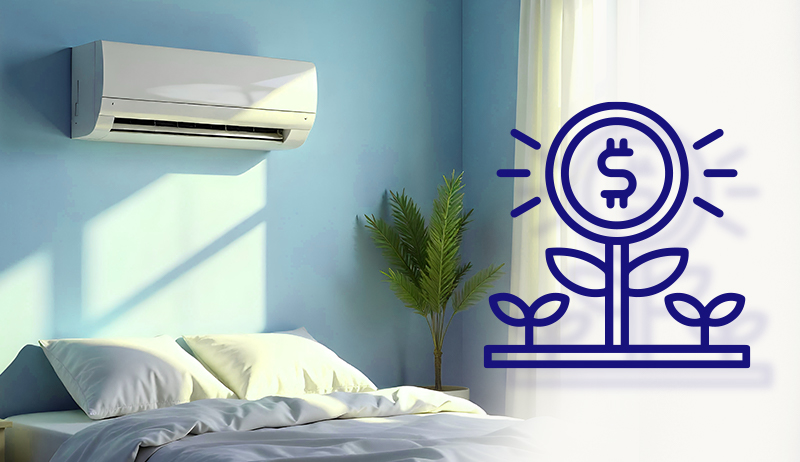
Choosing efficiency over just cooling
Rather than improving just cooling, the Victorian households treated the upgrade as a heating & cooling renovation, switching to a system that uses electricity rather than gas.
Modern inverter systems are more efficient, as they modulate their output, offer better zoning, and can both heat and cool, allowing you to enjoy both winter comfort and summer cooling in one system.
At Cyanergy, we emphasise this home upgrade path:
“Efficient and Eco-Friendly Electric Multi-Split Air Conditioner. Take advantage of up to $7,200 in Victorian Government Energy Upgrade incentives, save big this winter on your gas bill.”
Out-of-pocket and rebate
Here is recent data from the average estimation for a household from the aircon rebate case study in Victoria.
In the quotation, the family had an installation cost of approximately $8,000 for the new multi-split system, including the decommissioning.
The VEU discount for gas-ducted to multi-split upgrades in Victoria was approximately $2,500.
So, their net out-of-pocket cost was ($8,000 – $2,500), which is approx $5,500.
How to Apply for the VEU Rebate: Are You Eligible?
The Victorian Energy Upgrades (VEU) program provides rebates for eligible energy-efficient upgrades such as installing a high-efficiency reverse-cycle air conditioner to replace an older heating or cooling system.
Before we discuss how the rebate works, here are the eligibility criteria.
So, to qualify under the VEU program:
- The property must be more than two years old.
- The existing heating or cooling system must be removed or replaced.
- The new system must be an eligible high-efficiency reverse-cycle unit installed by an accredited
provider.
How the Rebate Works
In this case, the quote from Cyanergy already included the VEU discount, meaning the price shown was the net cost after applying the rebate allocated to the installer.
After installation:
- The accredited provider registers the upgrade with the VEU program.
- They create and claim Victorian Energy Efficiency Certificates (VEECs) for the upgrade.
- The value of those certificates is passed on to the customer as an instant discount on the invoice.
The homeowner simply has to:
- Signs off that the old system was removed or decommissioned.
- Provides any required evidence or documentation, like serial numbers or photos.
The Result
The rebate is applied instantly at the point of installation, reducing the upfront cost — no need for the homeowner to submit a separate claim.
Why is the VEU rebate significant?
Rebates like this make a big difference in the decision-making process. As the website says:
On average, households that upgrade can save between $120 and $1,100 per year on their energy bills.
Additionally, the government factsheet notes that households can save between $120 and over $1,000 annually, depending on the type of system and upgrade.
Thus, the rebate reduces the payback period, making the system more widely available.
Energy Bill Before vs After: See the Savings!
Here’s where the real story says: the household’s actual bills before and after the upgrade.
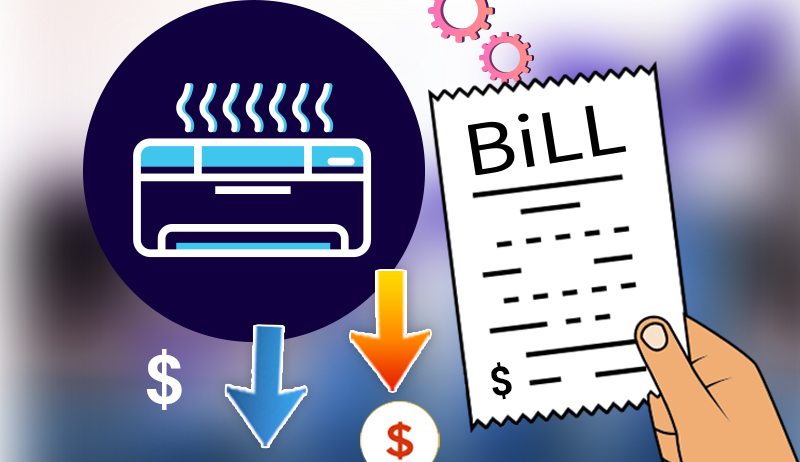
Before Adding Air Conditioning System
- Ducted gas heating and an older split system.
- In Victoria during winter months, the average monthly gas cost is approximately $125, and for electricity,
and other supplementary costs, an additional $30. So roughly $155 per winter month. Therefore, over the
course of four months, the price can reach nearly $620.
- In summer cooling months, if their older split system ran for 2 hours per day, for example, from May to
October, it would cost around $50 per month. Over the 6 months, it will be, $300.
- Total annual heating and cooling cost is approximately $920
After Adding the Air Conditioning System
- Household that installed a Multi-split reverse-cycle system.
- During the winter months, running the zones efficiently and utilizing the inverter system resulted in a decrease in heating electricity costs.
Let’s say the average is around $70 per month over four months, totaling approximately $280.
- In the summer months, efficient cooling costs approximately $30 per month over six months, totaling around
$180.
- So, the annual heating
and cooling cost is approximately $460.
Net Savings
Annual savings: $920 (before) – $460 (after) = $460 per year.
At that rate, the upgrade pays for itself in net savings and an upfront rebate.
However, as they also removed gas connection fees and standing charges, improving comfort, therefore, the “effective” savings were perceived to be higher, around $1,200 in the first year with the air conditioning upgrade.
This figure also includes avoided gas standing charges of $150, lower maintenance costs of the old system, and improved efficiency.
Maximising Your Savings| Key Insights from the VEU Rebate Program
Based on the case study and Cyanergy’s experience, here are some lessons and actionable tips for homeowners considering an upgrade.
- Don’t wait until your system dies.
Replace outdated or inefficient gas or electric resistance systems immediately. Once the system starts failing, you may have fewer options or higher installation disruption.
- Choose a provider who handles the rebates.
Dealing with the rebate or discount component (VEU) on your own adds complexity, like documentation, compliance, and installation. So look for an accredited provider.
- Understand the actual savings potential.
It’s not just the rebate amount; consider running costs, efficiency improvements, zoning, and the ability to heat and cool.
- Ensure proper sizing and zone control.
As many families discovered, the benefit came from zoning: you only heat and cool rooms you use. Oversized units or whole-home heating can reduce savings.
- Factor in non-energy benefits.
Better comfort, for example, quieter systems and more consistent temperatures, as well as the removal of gas standing charges, less maintenance, and improved resale appeal for eco-conscious buyers, all benefit you.
- Check the accreditation and compliance.
With rebate programs, there’s always a risk of non-compliant installations or companies that don’t follow through.
So, do your homework: check that the installer is accredited for VEU, ask for references, and ensure that the documentation is completed appropriately.
- Request detailed quotes that include estimates for both “before rebate” and “after rebate” costs.
This helps you see how much you’re actually paying, the discount you receive, and ensures transparency. The rebate is not always the full difference; minimum contribution rules apply.
- Monitor your bills after installation.
Keep track of your energy bills (gas & electricity) before and after for at least 12 months. This will indicate whether the savings are as expected and aid in budgeting.
Be realistic about pay-back
Although the rebate helps upfront, large systems still cost thousands of dollars. Don’t expect payback in one or two years (unless you have extreme usage).
However, with a well-designed system, rebates, and efficiency gains, a payback of 5-10 years or better is possible, depending on usage.
Final Notes

This aircon rebate case study illustrates the VEU saving. By working with Cyanergy Australia, households transformed a traditional, inefficient gas-ducted heating and older split cooling system into a modern, efficient, zone-controlled multi-split reverse-cycle air-conditioning system.
This was made more affordable through the VEU scheme discount.
The result? A net cost of around $5,500, improved comfort, and savings of approximately $1,200 in the first year.
This real-world “VEU saving example” shows that:
- Rebates matter as they make the upgrade financially viable.
- Efficiency matters as modern multi-split reverse-cycle systems deliver lower running costs.
- Removing inefficient gas heating can unlock significant savings.
- A reliable installer who navigates the rebate process effectively is crucial.
So, if you are looking for an accredited provider in Australia, Cyanergy is here to help!
Contact us today to receive a free solar quote. We will handle all your paperwork to ensure a fast and smooth installation process.
